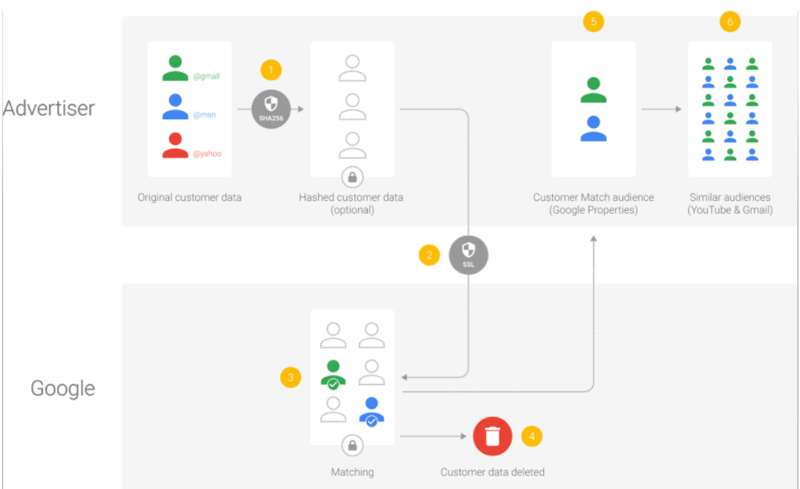Google’s AdWords platform has been tweaked recently to allow for the integration of a bundle of new features. The added features will permit marketers to utilize postal addresses and phone numbers to reach particular groups of consumers and for Customer Match retargeting.
The company launched Customer Match in 2015. The feature allowed marketers to upload their lists of customers and other proprietary lists (ex. newsletter subscribers) into the AdWords platform to target or exclude search and display advertisements to particular users. However, Customer Match only worked with uploaded email lists.
Allowing the use of phone numbers and postal addresses is a significant change from the company’s previous customer targeting model. Since the old system only allowed email data that had been rendered anonymous, marketers could only use blanket interests and demographics to target potential clients. This led to marketers who wanted a more targeted approach feeling dissatisfied.
AdWords’ new strategy will enable hashed contact numbers and email addresses to be matched with Google’s own hashed strings. This approach is predicted to be twice as efficient at reaching the target demographic. After all, postal addresses and phone numbers are usually more reliable and accurate than email addresses.
The illustration below breaks down how Customer Match works:

Graphic via Google
Marketers agree that Google’s new AdWords approach would boost Customer Match rate, especially for brands who either do not have all their customer’s email addresses, or the consumers’ addresses are different from what Google has. A postal address also does away with confusion and ambiguity and results in higher match rates, particularly when used in tandem with other data.
Kevin Lee, co-founder of digital agency Didit, believes that Google’s new targeting tools will result in higher match rates since adding these new data will also offer more flexibility in a business marketing campaign.
Augmenting the AdWords platform could also result in companies earmarking larger marketing budgets on Google since its believed the new tools will deliver positive results.
Making use of consumer addresses and phone numbers is already common in marketing, but Google was slow to incorporate it into its system. However, the delay is mostly due to the company being under the intense scrutiny of regulators.
Of course, this improvement to the AdWords system could potentially cause problems. Google’s previous terms and conditions allow marketers to only use their own data, and not utilize third-party data. But by permitting phone numbers and postal addresses to be used, there’s a danger that direct-response marketers might try to secure information through any means to stay ahead of the game.
[Featured Image via Google]


